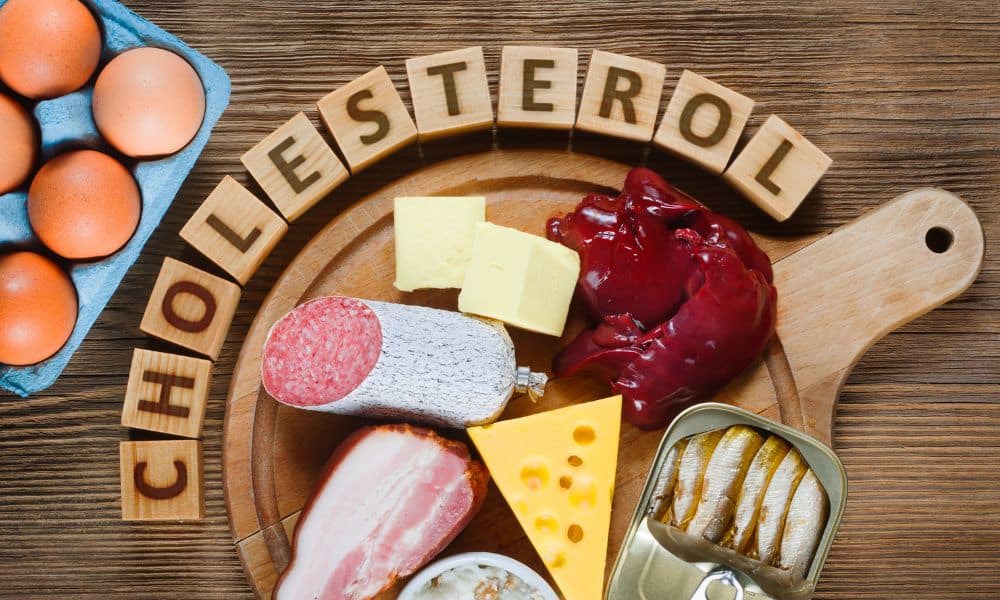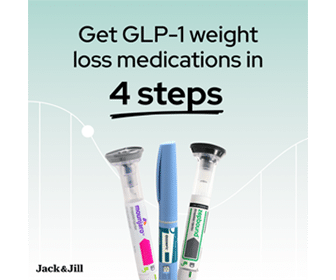Cholesterol is one of the most worry-some substances, especially when you are a fitness fanatic or health-conscious person. Whether eating a sandwich or pasta, you need to know how much cholesterol you consume. If you don’t know how to manage cholesterol consumption, you must first understand it. So, let’s look at this article to learn everything about it.
What is Cholesterol?
Cholesterol is a lipid that is found in the body. For example, the liver produces fat-like, waxy material, basically cholesterol. It plays an essential role in forming certain hormones, cell membranes, and vitamin D.
It is important to note that cholesterol doesn’t dissolve in water; therefore, your liver produces lipoproteins to transport cholesterol. In addition, lipoproteins are fat and protein-based particles. Therefore, lipoproteins carry cholesterol and triglycerides (another form of lipid) through your bloodstream.
High-density lipoprotein (HDL) and low-density lipoprotein (LDL) come in two common forms.
High cholesterol occurs when your blood contains too much LDL cholesterol (cholesterol transported by low-density lipoprotein). High cholesterol causes several health issues, such as stroke and heart attack, if left untreated.
However, high cholesterol does not show any symptoms, so it is vital to check your cholesterol levels regularly.
Bad Cholesterol (LDL Cholesterol)
Doctors call LDL (low-density lipoprotein) “bad cholesterol.” Also, this is because it transports cholesterol from the liver to the arteries. So when LDL cholesterol levels are high, they can build up on the walls of your arteries.
Cholesterol plaque is another name for accumulation, which leads to narrowed arteries, resulting in reduced blood flow and increased risk of blood clots. A stroke or a heart attack can occur when blood clotting takes place in the brain or heart.
Finally, the Centers for Disease Control and Prevention suggests that over one-third of American adults have increased LDL cholesterol levels.
HDL Cholesterol
Doctors refer to HDL (high-density lipoprotein) as “good cholesterol.” Also, this is because it aids in the removal of LDL cholesterol from your body by returning it to your liver. Also, it reduces the buildup of cholesterol plaque in your arteries.
Thus, having healthy HDL cholesterol levels means a lower risk of heart diseases, blood clots, and stroke.
Triglycerides, A Different Type of Lipid
Another form of lipid is triglycerides, which differ from cholesterol. While cholesterol is used to produce cells and certain hormones, we use triglycerides as an energy source.
When you consume more calories than your body can use instantly, you convert those calories to triglycerides. Thus, we store triglycerides in fat cells and circulate them in our bloodstream through lipoproteins.
The storage of triglycerides increases when you consume more calories daily. As a result, you can have a greater chance of having health problems, such as stroke and diabetes.
A simple blood test can determine your triglyceride and cholesterol levels.
Recommended Dosage of Cholesterol
You are wondering how to manage cholesterol consumption? This chart by USDA will help you determine the daily intake of cholesterol. If you have risk factors for heart disease, consume less than 200 milligrams of cholesterol a day. If you do not have risk factors for heart disease, limit the amount of cholesterol you eat to less than 300 milligrams a day.
| Food | Cholesterol | Saturated fat | Trans Fat | Unsaturated Fat |
| One large egg | 186 mg, | 1.6 g | 0 g | 2.7 g |
| 1/4 lb. 95% lean ground beef | 70 mg | 2.5 g | 0.3 g | 2.5 g |
| 1/4 lb. 70% lean ground beef | 88 mg | 13.3 g | 2.1 g | 16.8 g |
| Six ounces of skinless chicken breast. | 124 mg | 1 g | 0.01 g | 1.9 g |
| 1 tbsp. Salted butter. | 31 mg | 7.3 g | 0.5 g | 3.4 g |
| 1 tbsp. Extra virgin olive oil. | 0 mg | 2 g | 0 g | 11.5 g |
| 1 cup vanilla ice cream, | 58 mg, | 9 g | N/A | 4.5 g |
| 1 cup low-fat yogurt | 15 mg | 2.5 g | N/A | 1.1 g |
| 3 ounces of uncooked shrimp | 137 mg | 0.1 g | 0 g | 0.2 g |
| One avocado | 0 mg | 4.3 g | 0 g | 23.4 g |
| 1/2 cup plain walnuts | 0 mg | 3.1 g | 0 g | 28.1 g |
Chart for Managing Cholesterol Consumption
Heart disease is the leading cause of death in the world. And having increased levels of cholesterol, particularly bad LDL, mainly cause heart disease.
Reduced levels of ‘good’ HDL cholesterol and high levels of triglycerides increase health risks. The good news is that eating the right food can help you have the proper cholesterol levels in your body. Here are the 11 foods that you must add to your diet:
Avocados
These are some of the most nutrient-dense fruits.
Nature enriches avocados with fiber and monounsaturated fats, two nutrients known for reducing “bad” LDL cholesterol while increasing “good” HDL cholesterol.
Scientists have shown avocados to decrease cholesterol in clinical tests. According to a study, obese and overweight people with high LDL cholesterol ate one avocado every day and showed reduced LDL cholesterol levels. Another review of 10 studies suggests a lower percentage of LDL and triglycerides when people substitute avocados for other fats.
Nuts
Another excellent nutrient-based food is nuts, as they are abundant in monosaturated fats. For example, walnuts are high in omega-3 fatty acids from plants, a form of polyunsaturated fat that improves heart health. Thus, almonds contain a rich quantity of L-arginine, an amino acid that aids in nitric oxide production. Therefore, it aids in blood pressure control.
Apart from that, nuts contain phytosterols. These plant substances have a similar structure to cholesterol and help decrease cholesterol by preventing it from absorbing in your intestines.
Nuts also contain magnesium, potassium, and calcium, which may help lower blood pressure and minimize heart disease risks—according to a review of 25 trials, consuming 2–3 servings of nuts daily reduced “bad” LDL cholesterol by 10.2 mg/dl on average. Hence, a daily dose of nuts can cause a 28% decreased risk of fatal and nonfatal heart disease.
Legumes
Legumes, commonly called pulses, are plant foods, including peas, beans, and lentils. These foods are rich in minerals, protein, and fiber. Also, when you replace processed meats and refined grains with legumes, you will notice an incredible improvement in your overall health.
Consuming a half cup of legumes daily helps reduce ‘bad’ LDL cholesterol by 6.6 mg/dl, according to a review of 26 randomized controlled studies. Subsequently, other legume-related studies promote weight loss even when there is no calorie restriction in a diet.
Whole Grains
If you want to manage cholesterol consumption, adding whole grains to your diet is excellent. An assessment of 45 studies found that consuming three servings of whole grains per day reduced the risk of heart disease and stroke by 20%. However, when people consume seven servings of whole grains per day, the benefits are significantly more significant. Thus, whole grains reduce heart diseases.
Whole grains have more vitamins, minerals, plant components, and fiber than processed grains since all-grain sections are intact. Also, doctors say whole grains improve health by controlling cholesterol levels; the following are the two best types of whole grains.
- Oats: This type of grain comprises beta-glucan, a soluble fiber that balances cholesterol. Consuming oats may cause a 5% reduction in total cholesterol and 7% of ‘bad’ LDL cholesterol.
- Barley: manufacturers also enriched this ingredient with beta-glucans, which promote a decrease of ‘bad’ LDL cholesterol.
Extra Virgin Olive Oil
It is an essential item in the heart-healthy Mediterranean diet. Throughout five-year research, researchers gave older individuals at risk of heart disease four tablespoons (60 ml) of extra virgin olive oil each day, along with a Mediterranean diet.
Compared to participants who ate a low-fat diet, the olive oil group had a 30% lower risk of heart problems. Also, olive oil is high in monounsaturated fatty acids, which may help improve “good” HDL cholesterol while lowering “bad” LDL cholesterol.
Not only that, but it also contains polyphenols, which lower the inflammation level that may cause heart disease.
Dark Leafy Greens
While all veggies are helpful to your heart, dark leafy greens are especially so.
Lutein and other carotenoids found in dark leafy greens like spinach and kale decrease the risk of heart disease. Also, carotenoids function as antioxidants, removing damaging free radicals that might cause artery hardening. By attaching to bile acids and causing your body to expel more cholesterol, dark leafy greens may also help decrease cholesterol levels.
According to one study, lutein helps prevent cholesterol from adhering to arterial walls by lowering oxidized “bad” LDL cholesterol levels.
Fruits and Berries
Another great way to manage cholesterol consumption is by eating lots of fruits. Soluble fiber is abundant in many fruits, which aids in cholesterol reduction. Also, it accomplishes this by encouraging your body to eliminate cholesterol and preventing your liver from making it.
Pectin, a type of soluble fiber, can reduce cholesterol by up to 10%. Apples, grapes, citrus fruits, and strawberries are among the fruits that contain them. Fruit also includes bioactive substances that can help prevent heart disease and other chronic diseases because of their antioxidant and anti-inflammatory properties.
Finally, consuming grapes and berries gives you another great way to manage cholesterol consumption, as these foods promote “good” HDL and reduce “bad” LDL cholesterol.
Fatty Fish
Omega-3 fatty acids are excellent for balancing cholesterol levels, and you can find them in mackerel and salmon.
We know these fatty acids improve heart health by raising “good” HDL cholesterol while reducing stroke risk and inflammation.
According to a study, consuming tuna/broiled/baked fish at least once a week helps lower the risk of stroke by 27%.
Also, don’t forget that boiling or stewing fish is the healthiest way to prepare it. Fried fish increases the risk of heart disease and stroke, so it is not an excellent way to manage cholesterol consumption.
Fish is a critical component of the Mediterranean diet, which medical experts widely researched for its heart-healthy advantages. Also, specific peptides in fish protein may contribute to the heart-protective advantages of fish.
Vegetables
For heart health, vegetables play a significant role, so they help manage cholesterol consumption. Also, they’re high in fiber and antioxidants and low in calories, which is vital for weight management.
Pectin, the cholesterol-lowering soluble fiber found in apples and oranges, is abundant in several plants. Eggplants, carrots, okras, and potatoes are all pectin-rich foods. Vegetables also include various plant substances that provide various health benefits, including heart disease protection.
Soy Foods
This type of food is also healthy for one’s heart. While the outcomes of previous studies show mixed results, recent research has been encouraging. Researchers connected soy meals to lower “bad” LDL and total cholesterol and higher “good” HDL cholesterol, according to a review of 35 studies. But, again, people with high cholesterol appear to be the most affected.
Garlic
People have been widely using garlic in cooking as medicine for centuries. The ingredient comprises several potent plant components, such as allicin, the principal active ingredient.
In one study, researchers show that garlic consumption helps in reducing blood pressure in individuals with high blood pressure. Not only that, but it also decreases ‘bad’ LDL cholesterol and triglycerides.
Also, many studies use aged supplements, which are more effective than other garlic preparations because they require relatively high doses of garlic to have this heart-protective effect.
Natural Supplements for Lowering Cholesterol to Add to the Diet
- Soluble fiber.
- Psyllium.
- Phytosterols.
- Red yeast rice.
- Ginger.
- Flaxseed.
The Last Word on Cholesterol and How to Manage Health During a Fitness Journey
We hope you have got the answer to your question, ‘how to manage cholesterol consumption.’ All you need to do is do the correct math and have good self-control to consume healthy cholesterol daily. Finally, once you get on track, you will notice an incredible improvement in your overall health.





